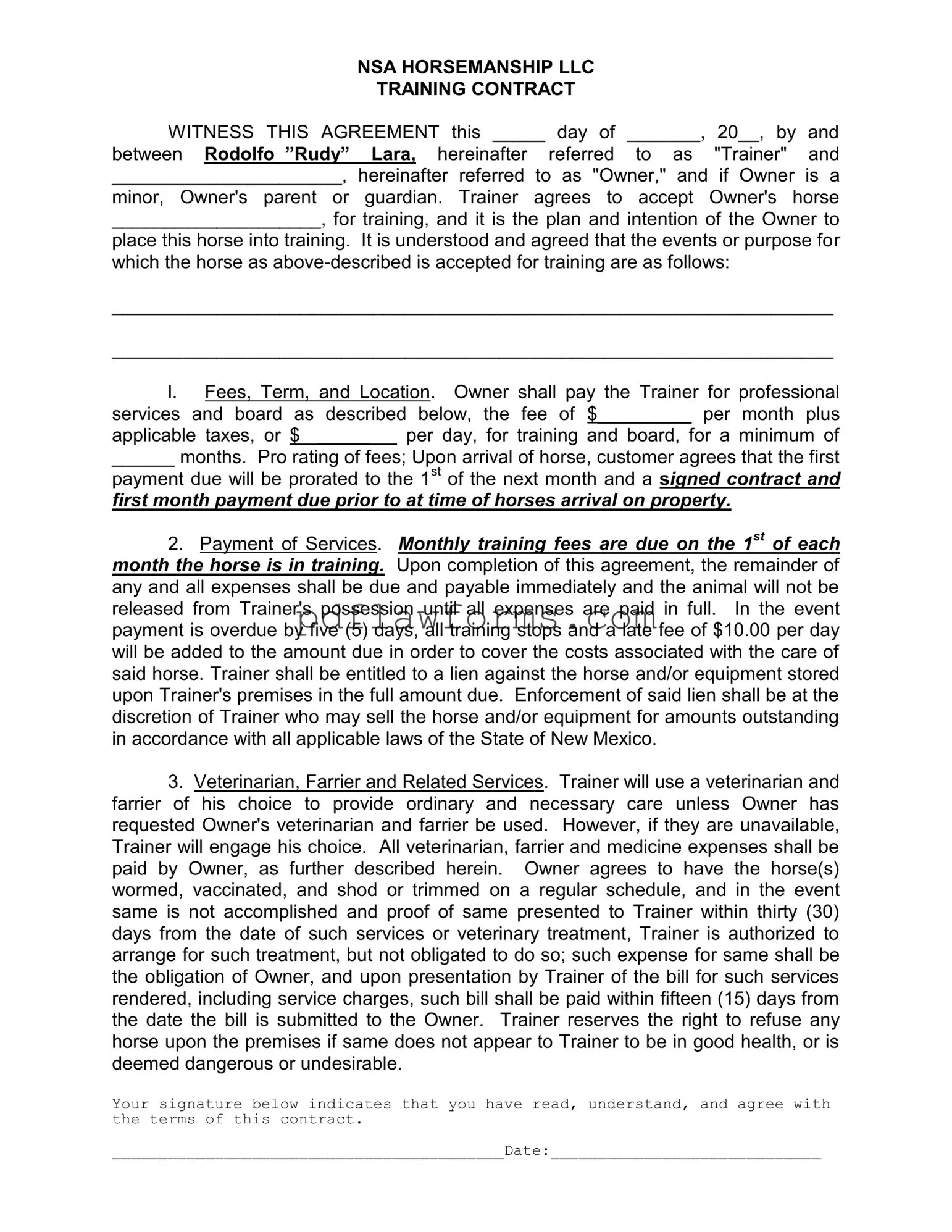The Horse Training Contract form is a vital document for anyone looking to engage a trainer for their horse. This agreement outlines the responsibilities and expectations of both the trainer and the horse owner. It begins with the identification of the parties involved, specifying the trainer, Rodolfo “Rudy” Lara, and the owner, who may also be a minor's parent or guardian. The contract details the horse being trained, the fees for training and board, and the payment schedule, emphasizing that fees are due monthly and any overdue payments will incur a late fee. Additionally, it addresses the care of the horse, including provisions for veterinary and farrier services, while placing the financial responsibility for these services on the owner. The trainer's obligations are clearly defined, including the standard of care expected and the inherent risks associated with horse training. In the event of unforeseen circumstances, such as the horse's death or unfitness for training, the contract outlines the options available to both parties. Furthermore, the agreement includes clauses about emergency care, ownership verification, and the right of lien, which protects the trainer’s interests. The contract also stresses the importance of communication between the trainer and owner, encouraging regular visits to monitor the horse’s progress. Overall, this form serves as a comprehensive guide to ensure that both the trainer and owner understand their roles and responsibilities, promoting a successful training experience.
